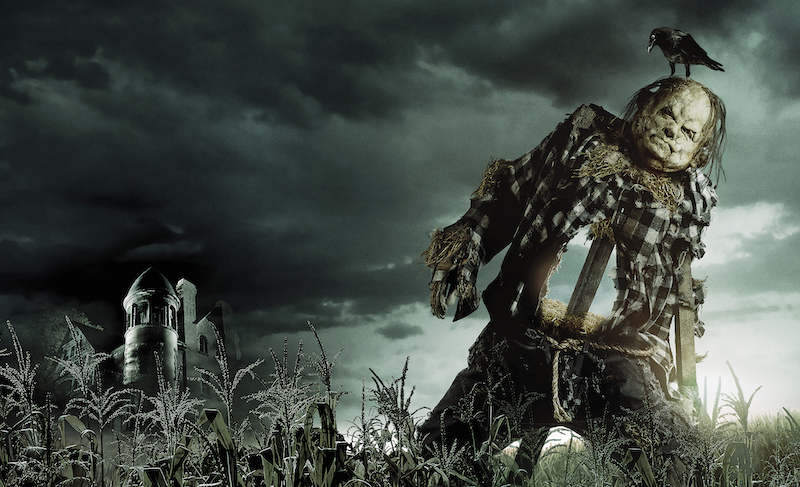For young horror lovers Alvin Schwarts’ Scary Stories to Tell in the Dark books loom as large on the psyche as Grimms’ Fairy Tales. The three quick-read collections of supernatural tales for kids, published between 1981 and 1991, were for many young readers a gateway into the creepy genre from which there was no return. Now, director André Øvredal and executive producer Guillermo del Toro have teamed up for a big screen adaptation of several of those stories, giving fans a chance to revisit the monsters of their youth as fully realized cinematic creations.
Øvredal is no stranger to scary stories. His second feature, the clever found footage horror-comedy Trollhunter, is based on the Norwegian folklore collection The Fairy Tales of Asbjørnsen and Moe. His follow-up, The Autopsy of Jane Doe, is a lean, slow-burn supernatural thriller set almost entirely in a city morgue. Fans of the beloved children’s books can expect a nostalgia trip that tickles their terror bone in the same way the stories did. Just check out the Scary Stories Instagram page, which has been flooded with remarks from fans about the impact this book series had on their childhoods. Lucky for them, del Toro and Øvredal are longtime fans of the books as well, so they know exactly what their viewers want.

(CBS Films)
The story, which takes place in a small Midwestern town in the late 1960s, concerns a book written by one Sarah Bellows, a haunted young girl who wanted others to feel her pain. High schooler Stella Nicholls (Zoe Colletti) and her friends discover the tome in the Bellows mansion, and after reading the stories contained within, find themselves trapped inside its nightmares. This setup allows the filmmakers to incorporate material from some of the most popular Schwarts stories, so it’s like a cinematic “greatest hits” compilation. Fans will recognize bits from “The Red Spot,” “The Big Toe,” “The Attic” and many more.
Even the books’ die-hards may find themselves jumping out of their seats with surprise. “While the stories are very much recognizable from the book, we also put some twists into each of the stories to keep the audience on their toes,” Dan Hageman, who co-wrote the film with his brother Kevin, commented in its press materials.
The fan service doesn’t just stop at the storyline. As any haunted reader will tell you, the original illustrations by Stephen Gammell are as essential as the text that surrounds them. Del Toro became fascinated with the imagery ever since discovering the books in a San Antonio bookshop and has since collected key art straight from the source. Honoring Gammell’s inimitable creature design, the filmmakers have opted to use practical effects whenever possible. Viewers may experience a shudder or two when they see Harold the Scarecrow or the Pale Lady from “The Dream”—spitting images brought to life through makeup and mechanics by creature designers Norman Cabrera and Mike Hill.

(CBS Films)
“From the start, Guillermo made it clear that while he wanted the visuals to follow in the style of Gammell,” co-writer Kevin Hageman says in Scary Stories‘ production notes. “He wanted the film’s heart to be founded on the characters, on three-dimensional, real friends who you care about and relate to, which makes the ride that much more frightening.”
While the film showcases nightmares come to life, Øvredal was adamant about avoiding gore. The film is just as much about the real psychological anxieties of growing up in an ever-changing world as it is about the monsters. The combination of these classic tales and illustrations mixed with new, relatable teenage characters should help the film affect its audience on a deeper and more terrifying level. Whether you’ve been reading the stories since the ’80s or haven’t heard of them until now, Scary Stories to Tell in the Dark is out to satisfy your craving for the campfire stories you heard as a kid. Just don’t wander into the cornfield alone.
Advertising disclosure: We may receive compensation for some of the links in our stories. Thank you for supporting LA Weekly and our advertisers.

